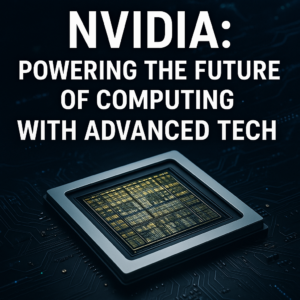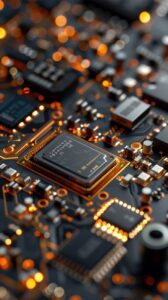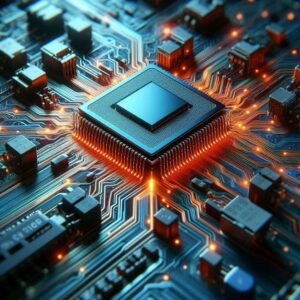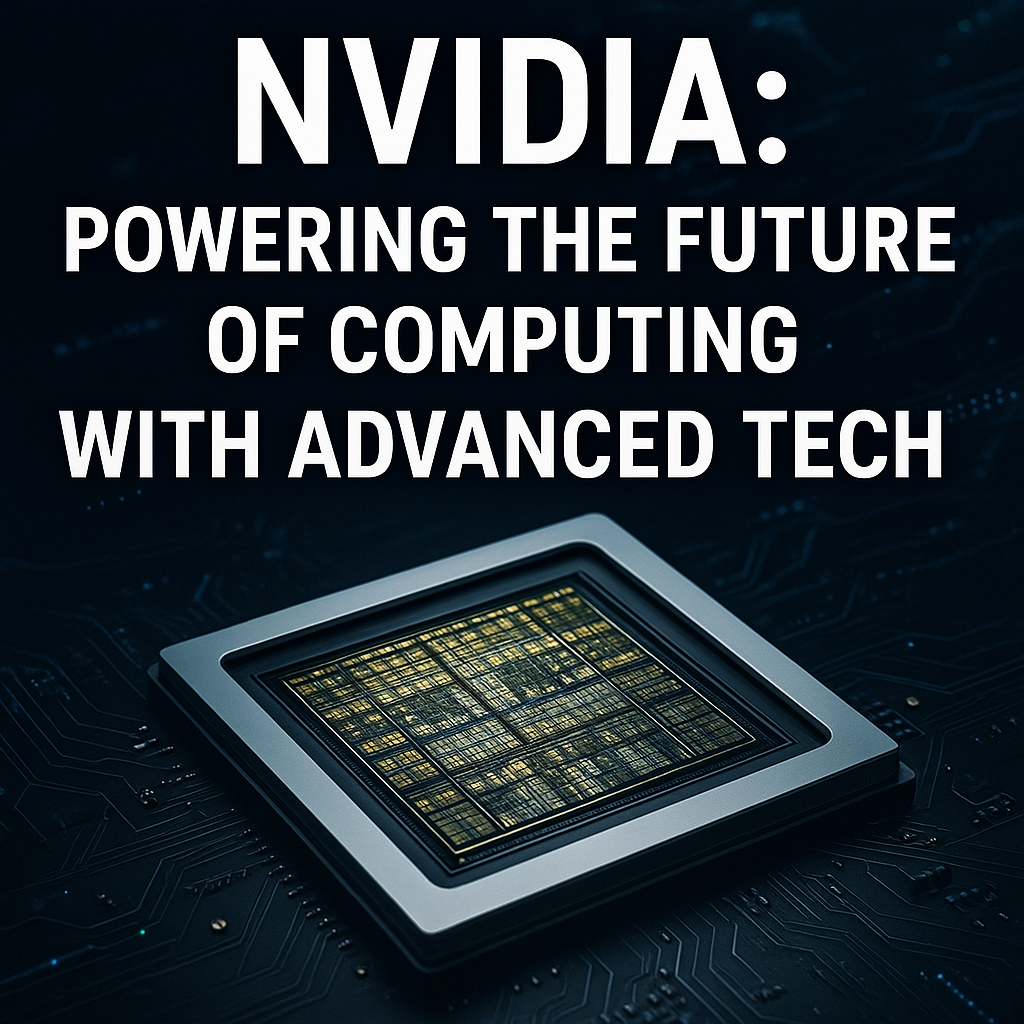NVIDIA: Revolutionizing the Future of Computing with Cutting-Edge Technology
NVIDIA CRASH
NVIDIA: Powering the Future of Computing with Advanced Tech
NVIDIA is one of the most influential technology companies in the world, pioneering advancements in graphics processing, artificial intelligence (AI), and high-performance computing. Since its founding in 1993, NVIDIA has evolved from a graphics card manufacturer into a powerhouse driving AI research, gaming, autonomous vehicles, and cloud computing. In this blog, we will explore NVIDIA’s groundbreaking technology, its impact across various industries, and what the future holds for the company.
The Evolution of NVIDIA: From GPUs to AI Powerhouse
The Birth of the GPU
NVIDIA revolutionized the gaming industry in 1999 by introducing the Graphics Processing Unit (GPU), a dedicated hardware component designed to accelerate graphics rendering. The launch of the GeForce 256 marked a turning point in computing, as GPUs enabled high-quality visuals and real-time rendering for gaming and multimedia applications. Over the years, NVIDIA continued to push the boundaries with its GeForce series, enhancing realism through technologies like ray tracing and DLSS (Deep Learning Super Sampling).
The Rise of CUDA and Parallel Computing
In 2006, NVIDIA introduced CUDA (Compute Unified Device Architecture), a parallel computing platform that allowed developers to leverage GPU power for general-purpose computing. CUDA revolutionized scientific computing, financial modeling, and deep learning by enabling massive parallelization. Researchers could now run complex simulations and AI models at unprecedented speeds, making GPUs essential for fields beyond gaming.
NVIDIA’s Dominance in AI and Deep Learning
GPUs Powering AI Research
Artificial Intelligence has seen rapid advancements thanks to NVIDIA’s powerful GPUs. The company’s hardware accelerates deep learning by handling vast amounts of data with high efficiency. The NVIDIA Tesla and A100 series GPUs, built for AI workloads, are widely used in research labs, universities, and tech giants like Google, Microsoft, and OpenAI.
AI-Powered Innovations: DLSS and Omniverse
NVIDIA’s AI research has also transformed gaming and content creation. DLSS, powered by AI, enhances image quality while improving performance in games, allowing players to experience high frame rates without sacrificing visual fidelity. Additionally, NVIDIA Omniverse, a collaborative 3D simulation and design platform, leverages AI to streamline workflows for industries like animation, architecture, and manufacturing.
NVIDIA’s Dominance in AI and Deep Learning
The Growth of NVIDIA Data Center Solutions
Cloud computing and data centers have become critical in modern computing, and NVIDIA plays a significant role in this domain. The company’s data center GPUs, including the A100 and H100, provide unparalleled processing power for AI, machine learning, and cloud services. Companies like Amazon Web Services (AWS), Microsoft Azure, and Google Cloud rely on NVIDIA’s solutions to offer AI-driven services to millions of users.
NVIDIA Grace CPU and the Future of AI Computing
In 2021, NVIDIA introduced the Grace CPU, its first data center processor, designed to work alongside GPUs for AI and high-performance computing workloads. This marks NVIDIA’s expansion beyond GPUs into the broader semiconductor market, positioning itself as a key player in AI infrastructure.
NVIDIA’s Impact on Autonomous Vehicles
NVIDIA DRIVE: Enabling Self-Driving Technology
Autonomous vehicles rely on AI-powered perception and decision-making, and NVIDIA’s DRIVE platform is at the forefront of this revolution. With powerful AI chips and deep learning algorithms, DRIVE enables real-time processing for autonomous driving systems. Companies like Tesla, Mercedes-Benz, and Toyota integrate NVIDIA’s technology to develop self-driving capabilities.
The Role of NVIDIA Orin and Thor SoCs
NVIDIA’s Orin and Thor system-on-chips (SoCs) provide the computational power needed for advanced driver-assistance systems (ADAS) and full self-driving (FSD) technology. These chips process sensor data from cameras, LiDAR, and radar to ensure safer and more efficient autonomous navigation.
NVIDIA’s Role in the Metaverse and Virtual Reality
NVIDIA Omniverse and the Future of Digital Worlds
As the metaverse concept gains traction, NVIDIA’s Omniverse serves as a critical platform for building interconnected virtual worlds. It enables real-time collaboration for 3D designers, engineers, and developers, leveraging AI to create realistic simulations and immersive environments.
VR and AR Advancements
With powerful GPUs and AI-driven rendering techniques, NVIDIA is pushing the limits of virtual and augmented reality. The company’s hardware supports VR headsets, enabling high-fidelity experiences in gaming, training simulations, and industrial design.
The Future of NVIDIA: What’s Next?
The Road Ahead: AI, Quantum Computing, and Beyond
NVIDIA’s future is deeply intertwined with AI, quantum computing, and next-gen semiconductor technology. The company is investing heavily in research to develop more efficient AI chips and explore quantum computing applications.
Expanding into New Markets
Beyond gaming and AI, NVIDIA is targeting industries like healthcare, robotics, and telecommunications. The company’s AI-powered medical imaging solutions and robotics platforms aim to transform industries that rely on complex computations.
Conclusion
NVIDIA has come a long way from being a graphics card manufacturer to an industry leader in AI, cloud computing, autonomous vehicles, and the metaverse. Its relentless pursuit of innovation continues to shape the future of technology. As AI and computing power evolve, NVIDIA remains at the forefront, driving advancements that will impact industries for decades to come. Whether in gaming, AI research, or autonomous systems, NVIDIA’s influence is undeniable, making it one of the most important technology companies of our time.

